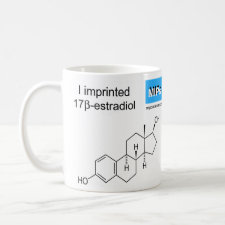
Authors: Zhang ZB, Hu JY
Article Title: Selective removal of estrogenic compounds by molecular imprinted polymer (MIP).
Publication date: 2008
Journal: Water Research
Volume: 42
Issue: (15)
Page numbers: 4101-4108.
DOI: 10.1016/j.watres.2008.07.006
Alternative URL: http://www.sciencedirect.com/science/article/B6V73-4T0WJRG-1/2/f2d19b28ec77f5dabd510198f079cd3a
Abstract: A molecular imprinted polymer (MIP) was synthesized and used for selective removal of estrogenic compounds. The study on the mass balance of template as well as template leakage revealed that almost all the template could be extracted out of the polymer and no template leakage could be detected in aqueous solution. In acetonitrile, MIP could adsorb more E2 than non-template imprinted polymer (NIP) by more than 3.5 times. In aqueous solution, MIP showed reduced selectivity for E2 with a 10% difference in adsorption capacity between MIP and NIP. With an initial E1, E2, EE2 and BPA concentration of 4áμM in aqueous solution and adsorbent concentrations of 0.01-0.5ámg/mL, the maximum adsorption capacities of MIP for E1, E2, EE2 and BPA were 92.8, 95.8, 115.4 and 57.4áμmol/g polymer, respectively. According to the adsorption isotherms for E1, E2, EE2 and BPA, a physical adsorption model containing three types of binding sites, namely, specific binding site, semi-specific binding site and non-specific binding site, was proposed to interpret the adsorption performance of MIP
Template and target information: estrogenic compounds, estrone, 17β-estradiol, 17α-ethinylestradiol, Bisphenol A, BPA
Author keywords: selective removal, molecular imprinted polymer, molecular recognition, estrogenic compounds, adsorption, hydrophobic interaction



Join the Society for Molecular Imprinting

New items RSS feed
Sign-up for e-mail updates:
Choose between receiving an occasional newsletter or more frequent e-mail alerts.
Click here to go to the sign-up page.
Is your name elemental or peptidic? Enter your name and find out by clicking either of the buttons below!
Other products you may like:
 MIPdatabase
MIPdatabase









